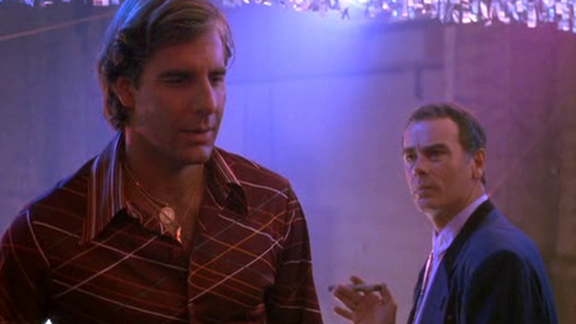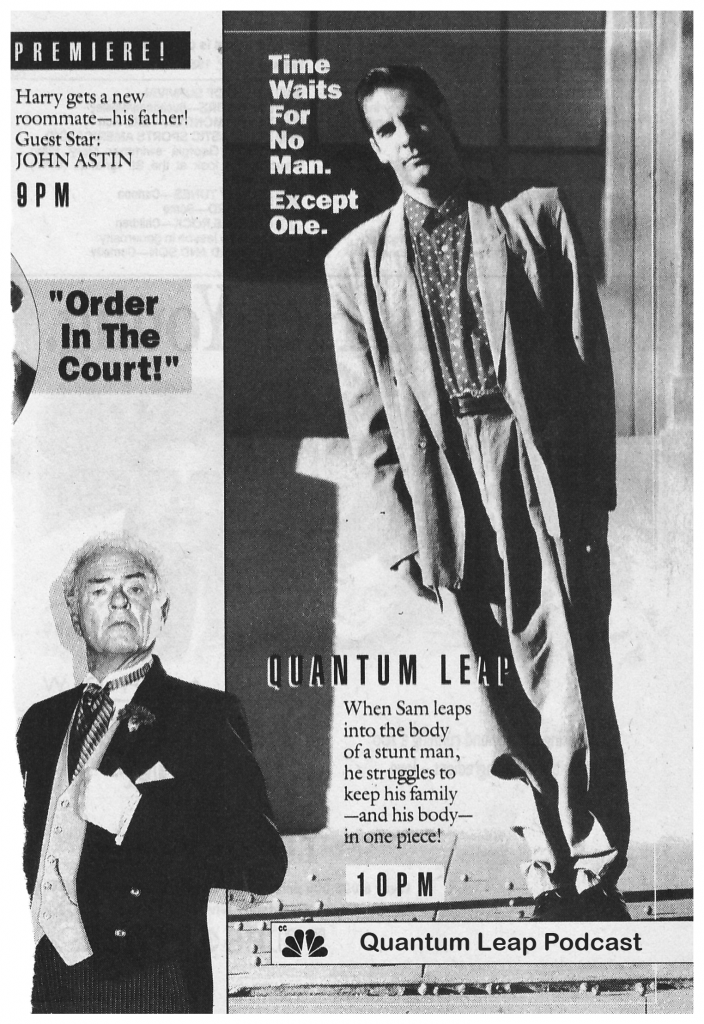Podcast: Play in new window | Download
In the tenth installment of The Quantum Leap Podcast, Albie and Heather discuss Season two episode two “Disco Inferno”. There’s first impressions, an episode recap, thoughts and opinions, an essay by Nikki Johnson, listener feedback, episode trivia and a supersized blooper reel.
Let us know what you think… Leave us a voicemail by calling (707)847-6682 and Send in your thoughts, theories and feedback, Send MP3s & Email to quantumleappodcast@gmail.com. Also join us on Facebook.com/QuantumLeapPodcast and Twitter.com/QuantumLeapPod
How mood rings work…
from howstuffworks.com
Mood rings were first seen as an extremely popular fad in the late 1970s, and they resurface regularly! The idea behind a mood ring is simple: Wear it on your finger and it will reflect the state of your emotions. The ring’s stone should be dark blue if you’re happy, and it supposedly turns black if you are anxious or stressed. While mood rings cannot reflect your mood with any real scientific accuracy, they actually are indicators of your body’s involuntary physical reaction to your emotional state.
The stone in a mood ring is either a hollow glass shell filled withthermotropic liquid crystals, or a clear glass stone sitting on top of a thin sheet of liquid crystals (seeHow LCDs Work for lots of details on liquid crystals). These liquid crystal molecules are very sensitive; they change position, or twist, according to changes in temperature. This change in molecular structure affects the wavelengths of lightthat are absorbed or reflected by the liquid crystals, resulting in an apparent change in the color of the stone. For example, as the temperature increases, the liquid crystal molecules twist slightly in one direction. This twist causes the liquid crystal substance to absorb more of the red and green portions of the visible light, and reflect the blue part. This causes the stone to appear dark blue. When the temperature decreases, the molecules begin to twist in the other direction, and reflect a different portion of the spectrum.
The inside of the ring conducts heat from your finger to the liquid crystals in the “stone.” The color green, which signifies “average” on the mood ring color scale, is calibrated to the surface temperature of a typical person, approximately 82 degrees Fahrenheit (28 degrees Celsius). If your surface temperature varies far enough from the norm, then the liquid crystals in the stone alter enough to cause a change in the color reflected. And if you take a mood ring off, it will normally change to black unless the ambient temperature is very high.
Take a look at the Mood Ring colors listed below, and what “mood” they represent. The colors are listed according to the change in temperature they represent, with dark blue being the warmest and black the coolest.
- Dark blue: Happy, romantic or passionate
- Blue: Calm or relaxed
- Blue-green: Somewhat relaxed
- Green: Normal or average
- Amber: A little nervous or anxious
- Gray: Very nervous or anxious
- Black: Stressed, tense or feeling harried
If you take a moment to think about the moods represented by the colors, you’ll see a definite correlation between your body’s surface temperature and the color of the liquid crystal. When you are in a passionate mood, your skin is usually flushed. This is a physical reaction to an emotion, causing the capillaries to move closer to the surface of the skin and release heat. This brings about a slight change in the surface temperature of your body. When you are nervous or stressed, your skin may feel clammy. This physical reaction to your emotional state causes the capillaries to move deeper into your skin, causing the surface temperature to drop.
Vietnam War Casualty Statistics
from statisticbrain.com
Total number of U.S. soldiers deployed to Vietnam 536,100
Total number of U.S. casualties in the Vietnam War 58,220
Total number of U.S. soldiers wounded in the Vietnam War 303,644
Total military casualties from both sides 1.475 million
Total wounded from both sides 2.094 million
Total civilian casualties from both sides 4 million
Age of the oldest man killed during the Vietnam War 62
Total number of KIA’s soldiers who were less than 20 years old 11,465


